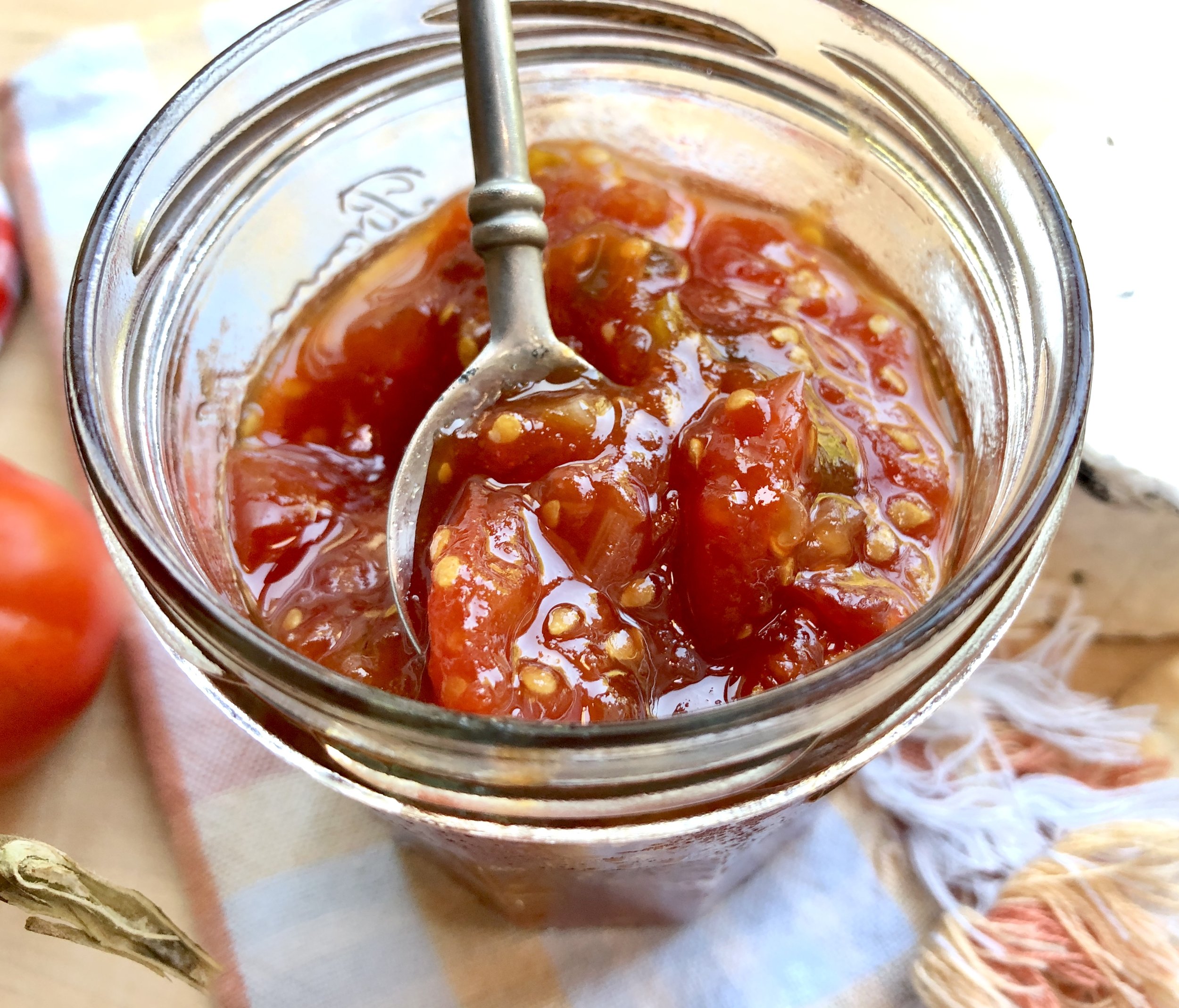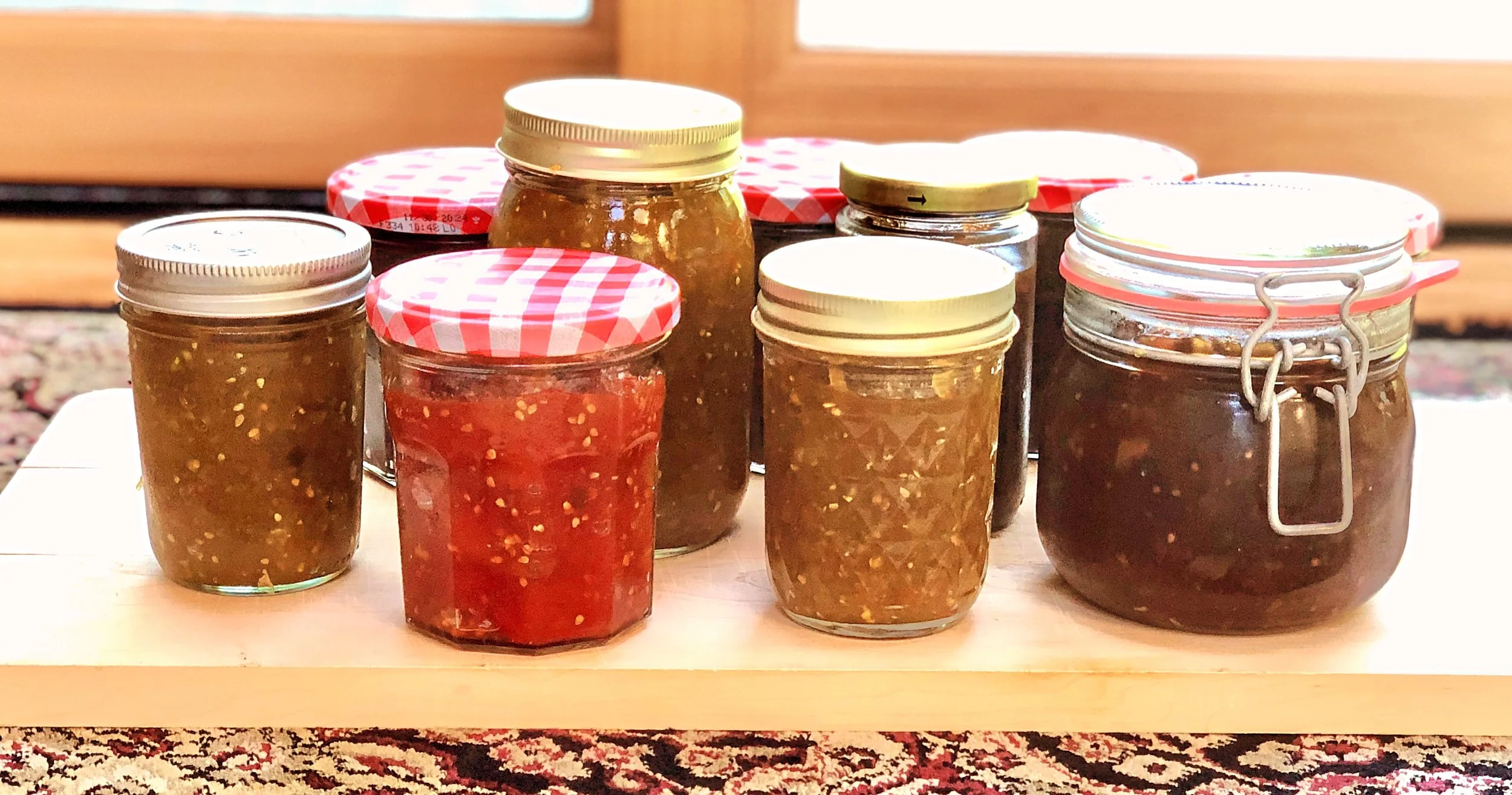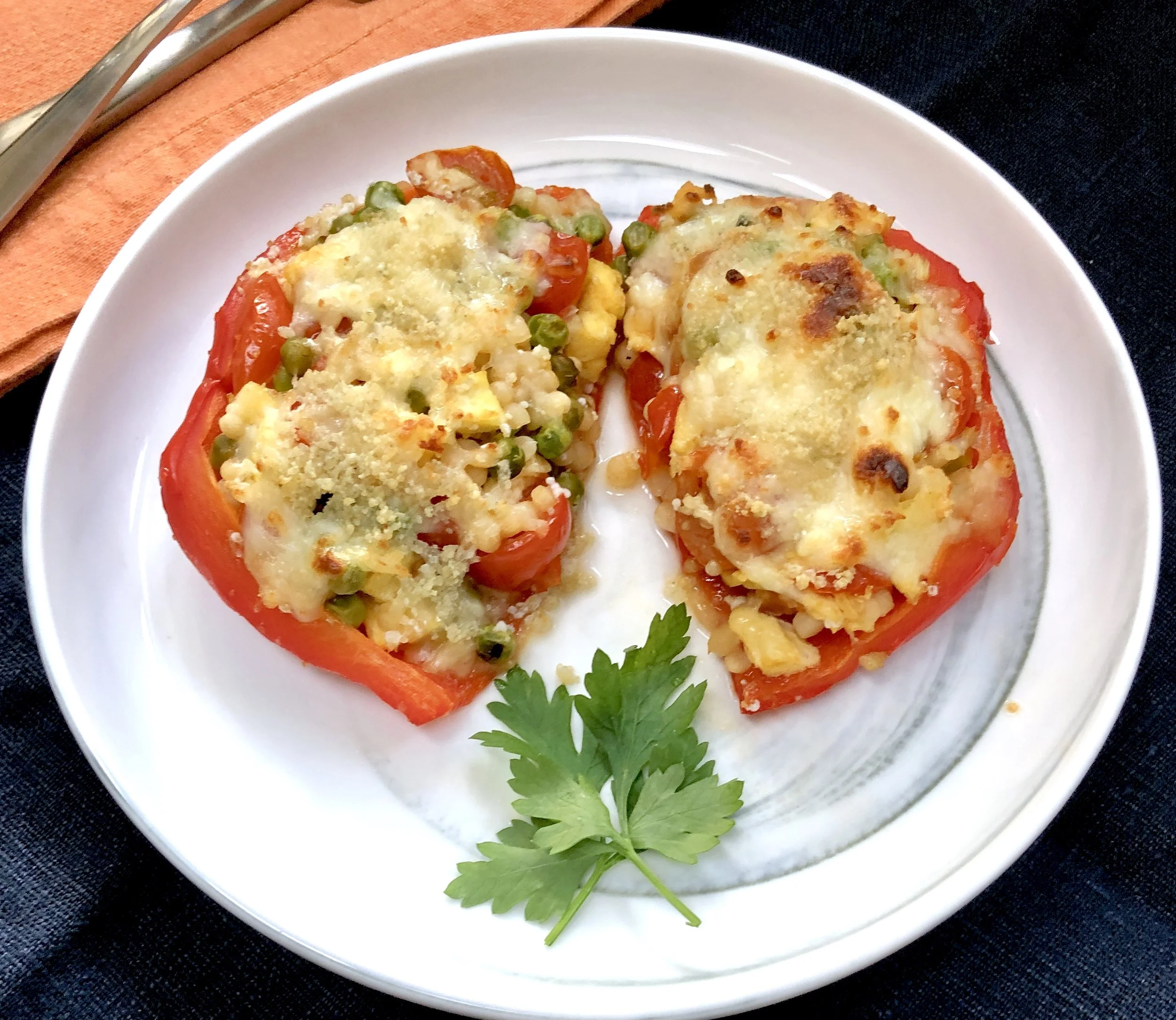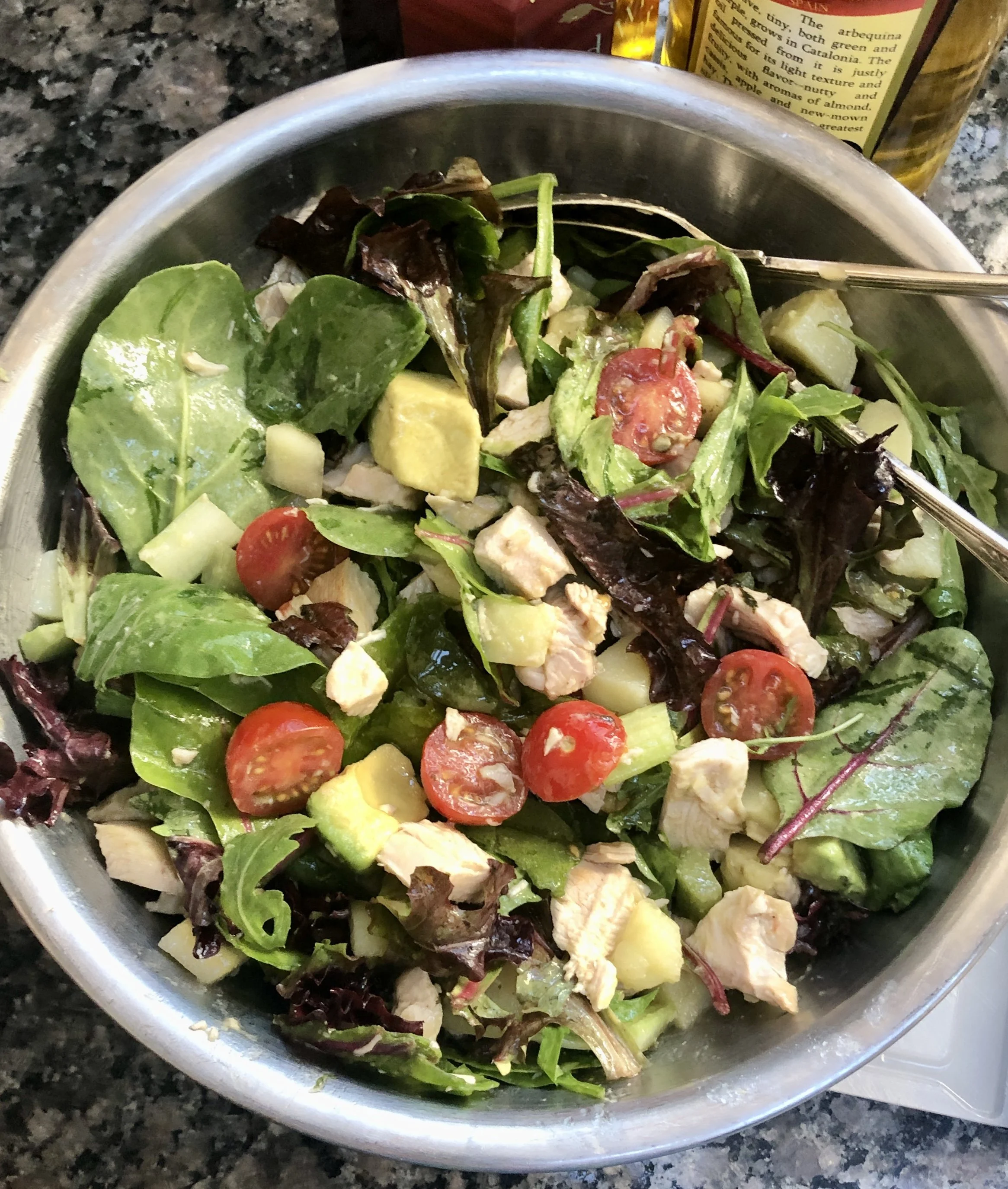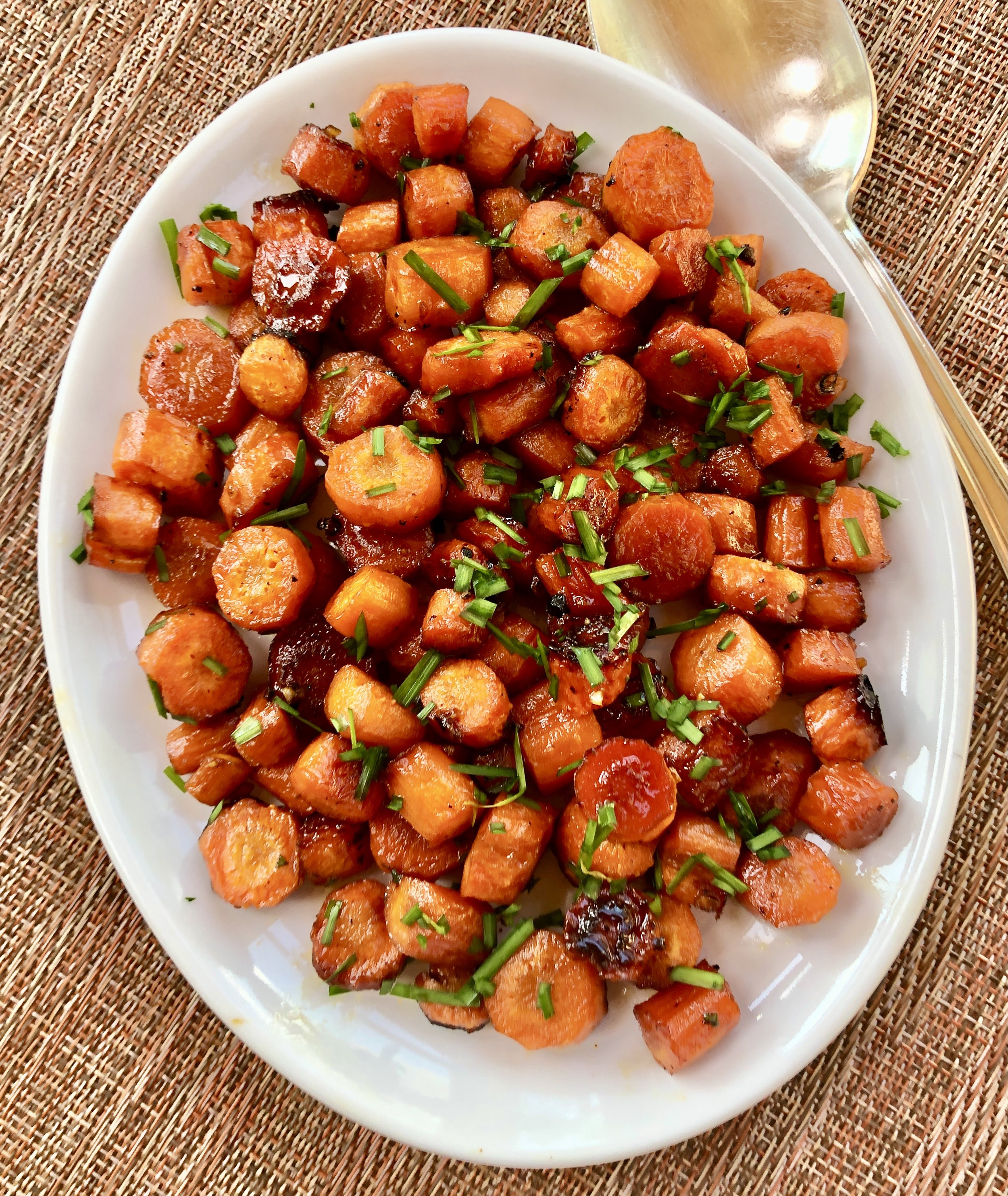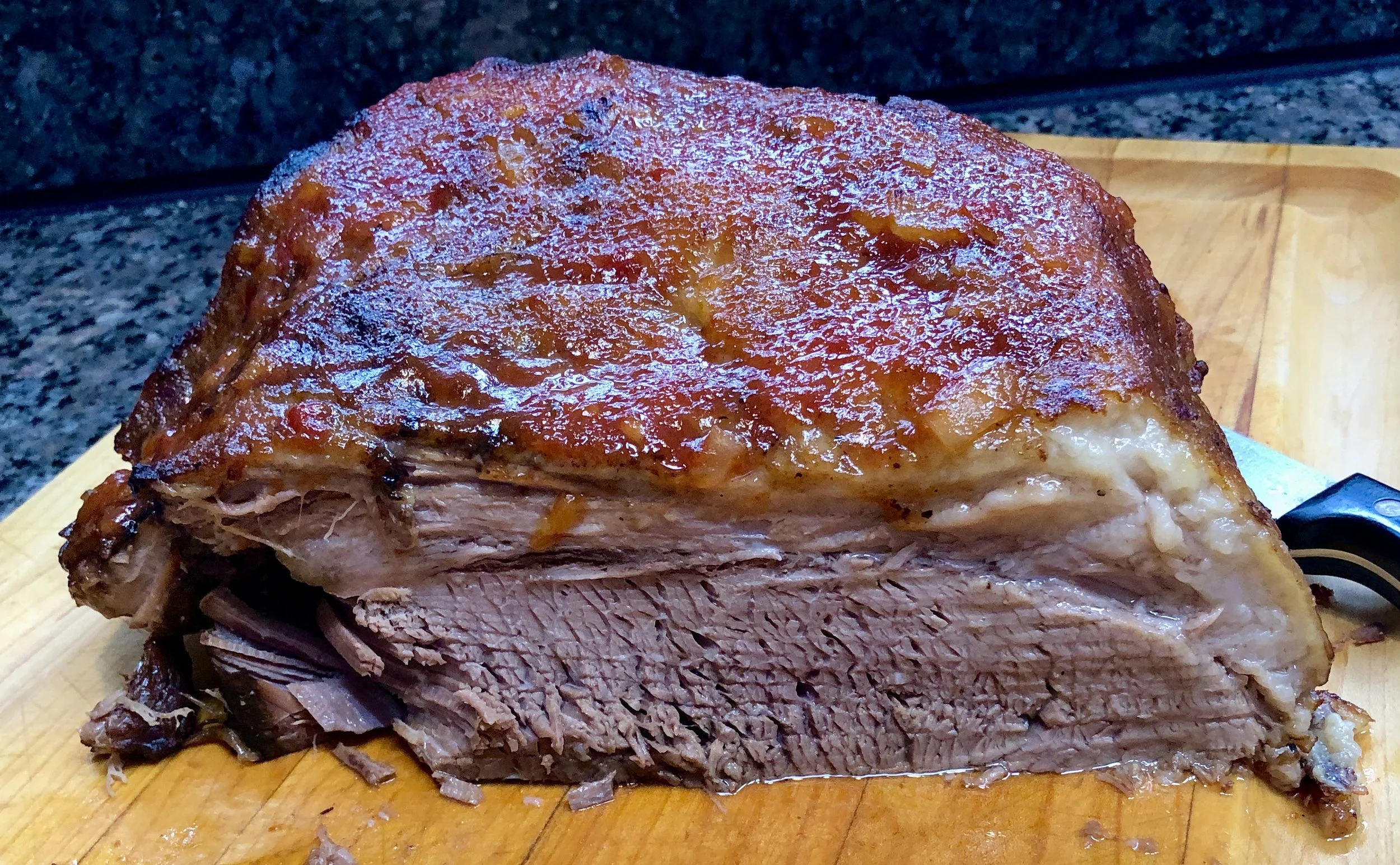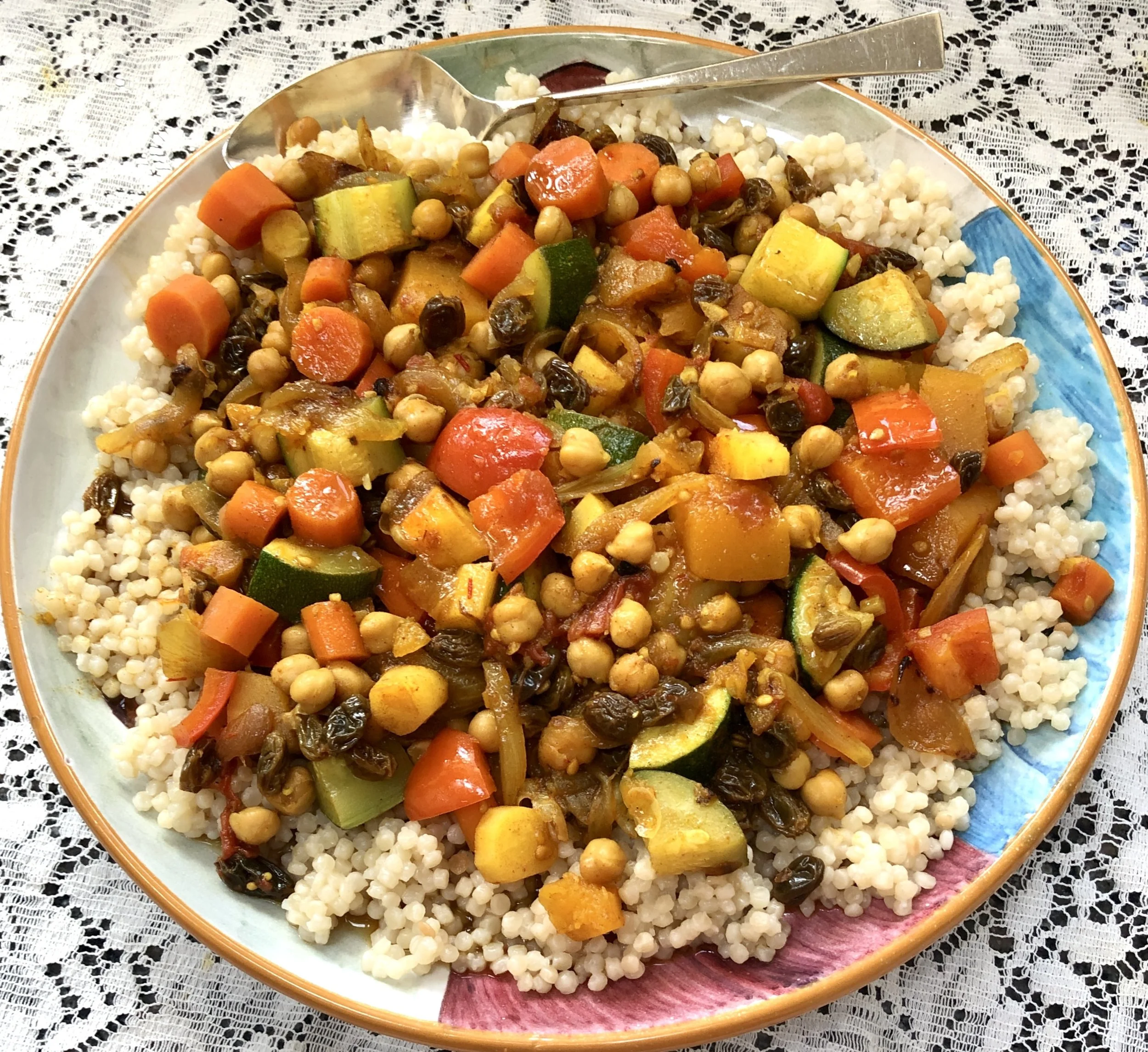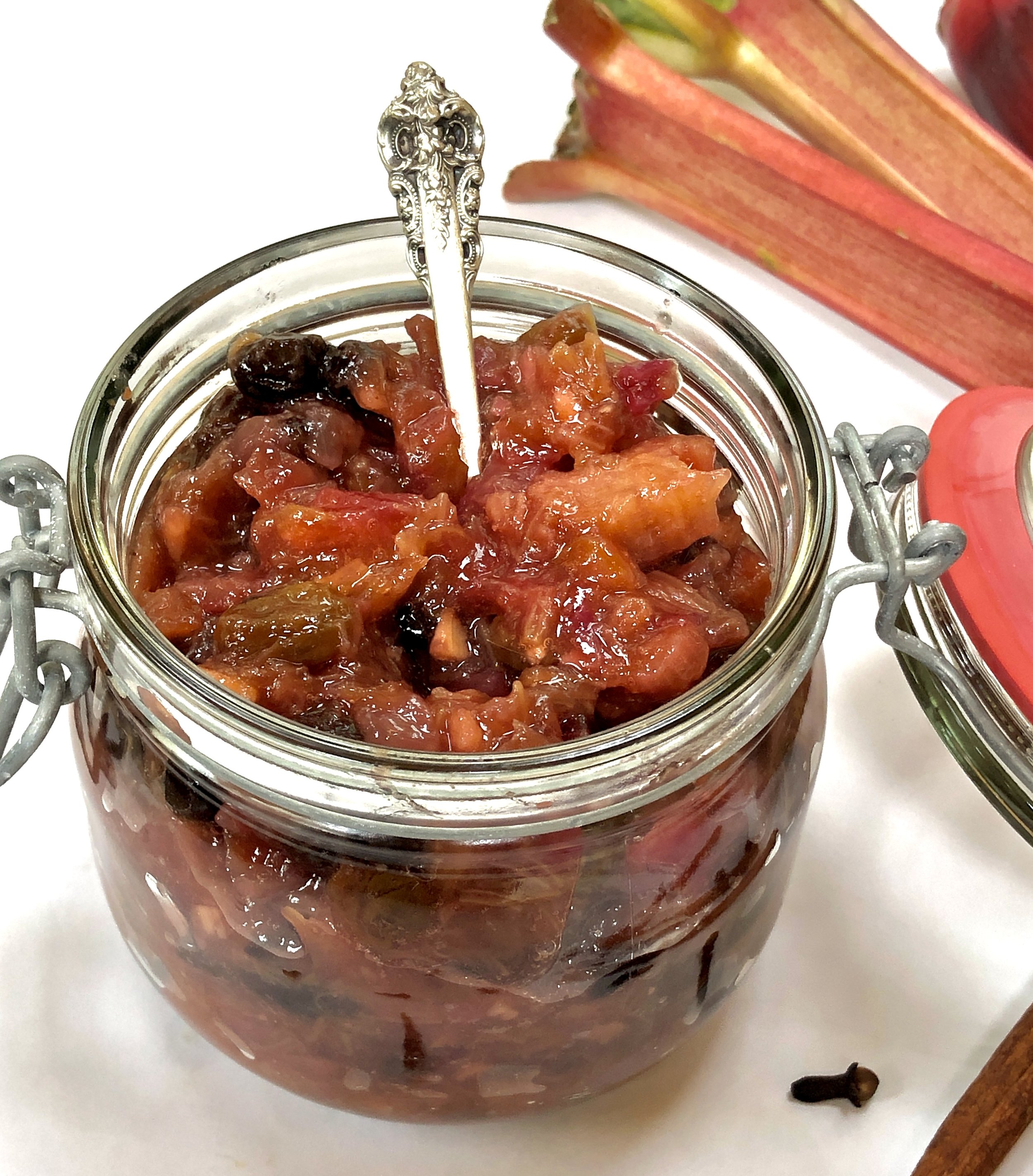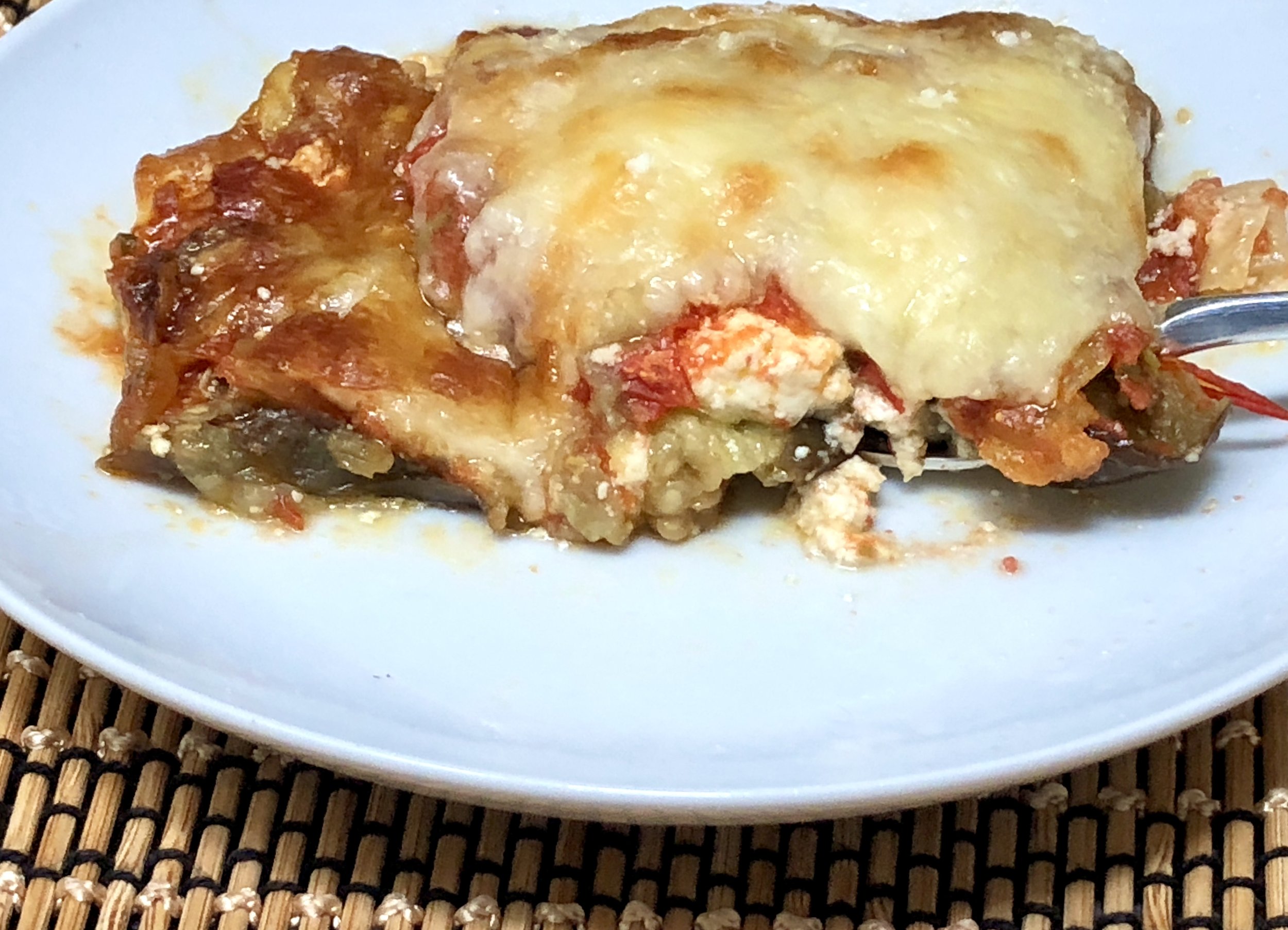The Jewish holidays of Shemini Atzeret and Simchat Torah mark the end of the year and the annual cycle of Torah readings. This joyful “ending”reminds me of school commencement which comes after the completion of required courses but means “a beginning,” a celebration of accomplishments but with a look to the future.
We’re done; it’s time to look ahead.
With this in mind, this year my Shemini Atzeret and Simchat Torah menu will focus on the end of the vegetable garden I planted last spring and using the harvest in new ways.
All summer we were blessed with fresh tomatoes that I used for sandwiches, salads, pizzas and sauce. And fresh chili peppers that went into mango salsa and roasted pepper soup. But recently we had a horrific rain storm that more or less put an end to my garden. I harvested the not so beautiful end of season tomatoes and cooked them into jam: Green Tomato Jam and, with the ripe red tomatoes, this simple Red Tomato Jam.
This was such a delicious way to make use of what was left! It’s vaguely sweet, with a hint of cumin. So far I’ve used the jam for grilled cheese sandwich and also as a spread for a cheese board.
Next: a topping for either burgers or steak.
There’s more to come of course. I’ll keep you posted.
New beginnings.
RED Tomato Jam
2 pounds tomatoes, preferably plum tomatoes
1 tablespoon olive oil or avocado oil
3 medium scallions, chopped
1 chili pepper, deseeded and chopped
1-1/4 cups sugar
2 tablespoons apple cider vinegar
1 tablespoon lemon juice
1/2 teaspoon salt
Bring a large pot of water to a boil, add some of the tomatoes, cook them for 20 seconds then place them under cold running water. Continue with the remainder of the tomatoes. Remove the skins from the tomatoes and chop them into small pieces. Heat the olive oil in a saucepan over medium heat. Add the tomatoes, scallions and chili pepper and cook for 4-5 minutes to soften them slightly. Add the sugar, apple cider vinegar, lemon juice and salt, mix thoroughly, bring the ingredients to a boil and turn the heat to low. Cook for about 1-1/2 to 2 hours, stirring occasionally, or until the mixture is thick and jam like.
Makes about 2 cups
